Expert Review
BMW M1000RR (2023 - ) review
The ‘M’ version of the RR is the ultimate, ultra-expensive, track-orientated version of the already incredible S1000RR superbike.
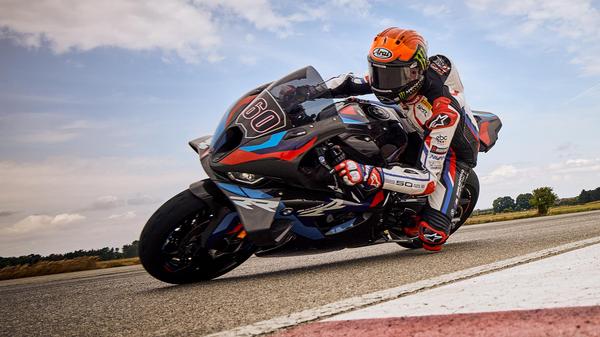

Words by: Phil West
Published on 1 December 2023 | 0 min read
The Autotrader expert verdict:
4
Built with racers in mind thanks to carbon everything, aero aids and a more tuneable engine, the M offers little extra for the road over the already phenomenal S1000RR but costs nearly twice as much. Money be damned, as some kind of exclusive, posing ‘ultimate’ not much comes close!
Reasons to buy:
- Ultimate ‘racer for the road’ image
- Phenomenal performance and track potential
- Exotic equipment and specification
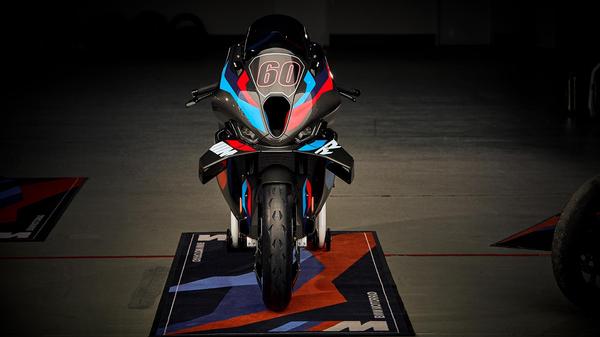
Design
“First created in 2021, the M1000RR was designed specifically by BMW’s famous ‘M’ division to be a better track version of its already excellent S1000RR superbike”
Few motorcycle designs are as uncompromising, bold and successful as the M1000RR but that doesn’t necessarily make it a road motorcycle. First created in 2021, the M1000RR was designed specifically by BMW’s famous ‘M’ division (best known to that point for its performance cars) to be a better track version of its already excellent S1000RR superbike. As such it is primarily aimed at racers, and also forms the basis of BMW’s factory WSB racer. With that in mind it featured more finely adjustable Marzocchi suspension while its engine, although no more powerful than the S1000RR, was claimed to be stronger and more tuneable. Steering geometry is also different, and its bodywork has aero ‘wings’. This new version goes further still with more radical, wind-tunnel developed carbon fibre bodywork including optional disc shrouds. The result not only looks like some kind of Darth Vader superbike but, going by its TT race success, works well, too. Not that any of that is particularly useful on the road…
Expert rating: 5/5
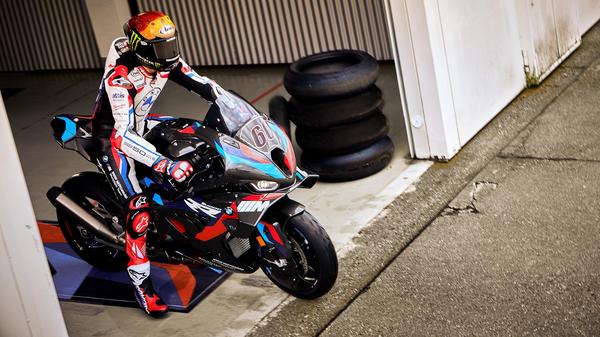
Riding position
“The latest base S1000RR is among the roomiest of the latest breed of superbikes and the same is true if not better with the M version”
The M1000RR is a race bike with lights and mirrors, so you’d expect it to have the cramped, uncompromising riding position all that suggests. In reality, it’s not as bad as it sounds. The latest base S1000RR is among the roomiest of the latest breed of superbikes and the same is true if not better with the M version due to its higher ‘TT’ screen and more adjustable foot pegs, handlebars and so on. There are even heated grips! Overall, though, this is still very much a machine built for speed on track rather than comfort on the road.
Expert rating: 4/5
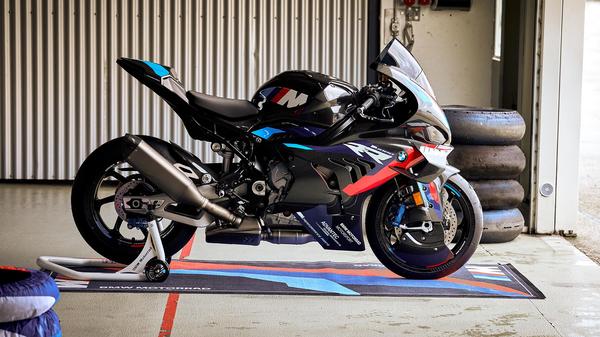
Practicality
“It’s not really any less comfortable than most other superbikes”
Few road-legal motorcycles are as single-minded and uncompromising as the M1000RR. After all, it’s a special track version of an already out-and-out sports machine. As a result, street practicality doesn’t even come into it. Yes, you can ride it on the road, commute or even tour on the M1000RR. But that’s not what it’s built for, and it’d be an expensive waste if you did. That all said, it’s not really any less comfortable than most other superbikes – in fact it’s significantly better than more compact, extreme alternatives such as Honda’s CBR1000RR-R Fireblade SP. But, by definition, there are few creature comforts, no pillion or luggage capacity, a performance ‘envelope’ far beyond sane or legal road limits and a price tag that precludes mere transport.
Expert rating: 2/5
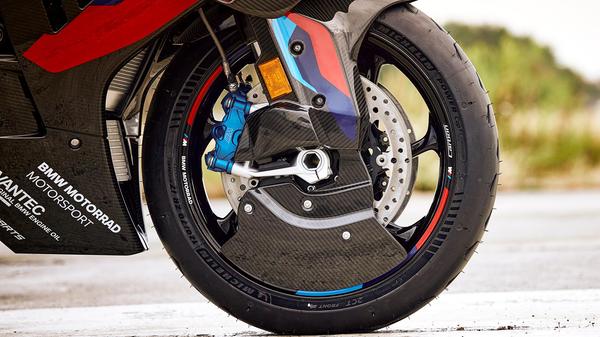
Performance & braking
“The M1000RR is slightly different internally, with higher compression heads, lighter valves, forged pistons and titanium con-rods to lay the foundations for future race tuning”
Although based on the 207 horsepower 999cc engine in the 2019 S1000RR the M1000RR is slightly different internally, with higher compression heads, lighter valves, forged pistons and titanium con-rods to lay the foundations for future race tuning. The result is a phenomenal 212 horsepower at 14,500rpm, although torque is unchanged at 113Nm at 11,000rpm. All that was true of the original 2021 M1000RR, differences for this new 2023 version mostly by way of its new fairing and aero. On the street, of course, it’s an absolute monster. Rev it to its higher reaches and it’s a gruff, aggressive missile capable of approaching 140mph before you’re even out of second gear. All of which makes it almost inconceivable as a road bike, given you simply can’t get anywhere near what it’s capable of within legal speed limits. That all said, the power delivery is almost placid lower down, with a tractable and flexible nature and slick quickshifter that makes mere travelling effortless. Braking is similarly stupendous, meanwhile. The M1000RR uses blue-anodised Nissin four-piston, radially mounted brake calipers gripping thicker 320mm discs than the standard S1000RR for phenomenal stopping power combined with real finesse at the lever. If you add the £5,000 ‘M Package’ you also get the MotoGP style carbon fibre disc covers, which claim to improve air flow even further over 150mph. This, obviously, has zero benefit on the road but they do look ace.
Expert rating: 5/5
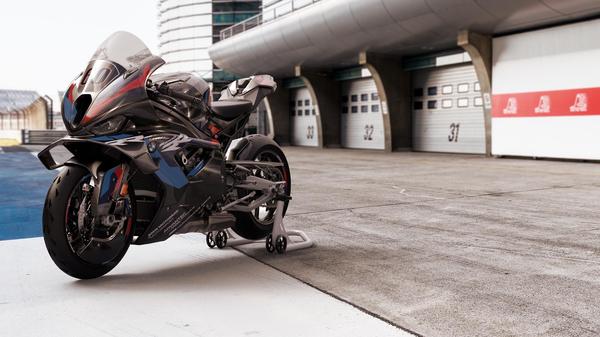
Ride & handling
“The idea is to add a touch of stability and reduce its inclination to wheelie although, for mere mortals on the road, you’d be hard pushed to tell”
While the standard S1000RR has handling and nimble steering simply beyond the scope of both the road and most riders the uprated M1000RR goes further still. Although the frame is the there’s different suspension, wheels and steering geometry. The head has actually been kicked out a little, to give 23.6 degrees of rake and 99.8mm of trail from the S1000RR’s 23.1 degrees and 93.9mm. The wheelbase is slightly longer as a result going up to 1457mm from 1441mm. The idea is to add a touch of stability and reduce its inclination to wheelie although, for mere mortals on the road, you’d be hard pushed to tell. It’s still a phenomenally stable yet swift-steering wonder. The M’s mechanically adjustable Marzocchi suspension is different from the S1000RR’s Sachs semi-active set-up, and as a result gives a firmer, more precise and single-minded ride. But for a bike like this, what do you expect?
Expert rating: 5/5
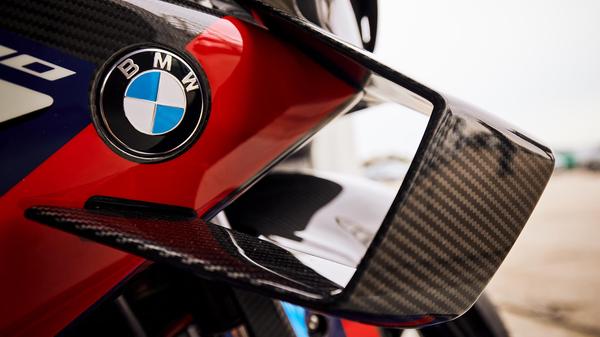
Running costs
“On top of the high initial purchase price there’s a raft of optional extras including the ‘M Package’ featured here”
At the end of the day we’re talking about a £30,000-plus extreme performance machine with over 200 horsepower and capable of near-200mph. Running costs are never going to be cheap, whether you run it on the road, or, even more so, on the track as BMW intends. On top of the high initial purchase price there’s a raft of optional extras including the ‘M Package’ featured here, which adds further to the cost. High performance means the M1000RR’s consumption of expensive tyres, brake pads, chains and sprockets and more is also likely to be high. While you’ll also lose a chunk in terms of depreciation the moment you wheel it out the showroom door.
Expert rating: 2/5

Reliability
“Most M1000RR buyers are likely to be concerned little with conventional reliability”
Despite the high performance, the reliability record of the latest S1000RR on which the ‘M’ is based is good. We’ve also heard of few problems with the previous 2021 M1000RR, upon which this is based mechanically – although that may be due to the fact that there are so few about and most of those end up on track or at the TT. As such, most M1000RR buyers are likely to be concerned little with conventional reliability but, even if you’re not a racer, as long as its serviced and maintained correctly, you should have little to fear.
Expert rating: 4/5
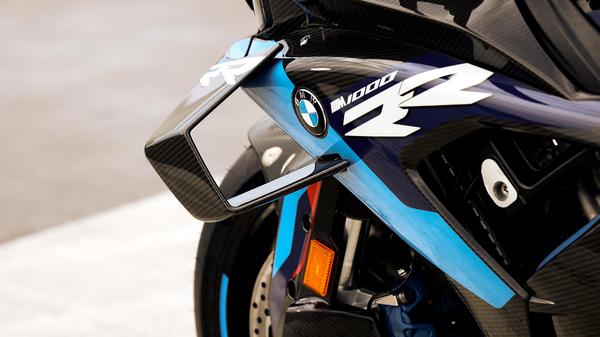
Warranty & servicing
“Impressively its service schedule is fairly conventional, despite its track aspirations”
Most new BMW motorcycles now come with a standard, manufacturer-backed three-year/36,000-mile warranty covering all parts and labour and the same is true of the latest M1000RR – even if it’s difficult to imagine one actually clocking up that kind of road mileage. Impressively its service schedule is fairly conventional, despite its track aspirations. After the first, standard ‘break-in’ oil and filter change at around 600 miles routine servicing is due every 6,000 miles, with the expensive valve check/adjustment due at 18,000.
Expert rating: 4/5
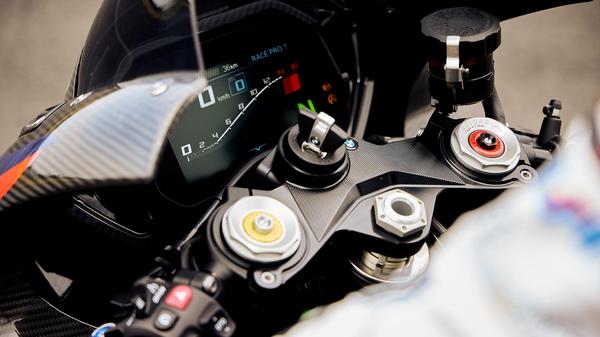
Equipment
“Along with the eye-grabbing new carbon fibre bodywork, wings and carbon wheels and billet adjustable levers and footpegs there are uprated Nissin brakes”
Plenty – but not the usual luxury/touring add-ons you might expect with conventional street motorcycles. Instead, with the M1000RR, it’s all about performance. So, along with the eye-grabbing new carbon fibre bodywork, wings and carbon wheels and billet adjustable levers and footpegs there are uprated Nissin brakes, a full-colour TFT dash with Bluetooth connectivity, a full array of electronic rider aids including switchable modes, traction control, anti-wheelie and quickshifter/auto-blipper and more. There are even heated grips! Compared to the S1000RR, though, there’s no semi-active suspension.
Expert rating: 5/5

Why buy?
“It also makes a mouth-watering track day bike and valid alternative to exotica like Ducati’s Panigale V4 R”
If you’re after a base superbike to build a competitive racer, especially for the TT, the M1000RR’s for you – just ask TT-winner Peter Hickman. If you’re well heeled, it also makes a mouth-watering track day bike and valid alternative to exotica like Ducati’s Panigale V4 R. If you’re after a road bike, though, the standard S1000RR is a far better bet unless your wallet and ego insist you simply MUST have the most GP-alike, gobsmacking road-legal superbike currently available!
Expert rating: 4/5